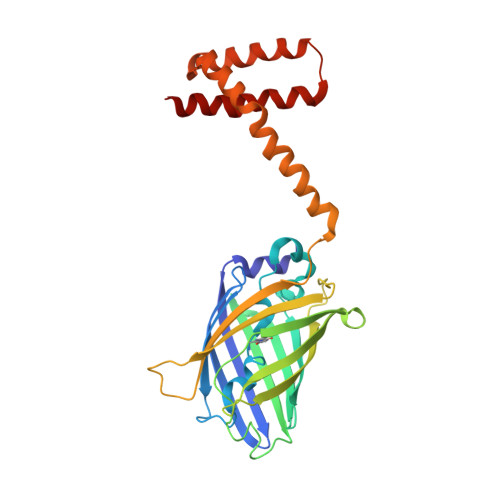Assembly of Bak homodimers into higher order homooligomers in the mitochondrial apoptotic pore.
Mandal, T., Shin, S., Aluvila, S., Chen, H.C., Grieve, C., Choe, J.Y., Cheng, E.H., Hustedt, E.J., Oh, K.J.(2016) Sci Rep 6: 30763-30763
- PubMed: 27488021
- DOI: https://doi.org/10.1038/srep30763
- Primary Citation of Related Structures:
5KTG - PubMed Abstract:
In mitochondrial apoptosis, Bak is activated by death signals to form pores of unknown structure on the mitochondrial outer membrane via homooligomerization. Cytochrome c and other apoptotic factors are released from the intermembrane space through these pores, initiating downstream apoptosis events. Using chemical crosslinking and double electron electron resonance (DEER)-derived distance measurements between specific structural elements in Bak, here we clarify how the Bak pore is assembled. We propose that previously described BH3-in-groove homodimers (BGH) are juxtaposed via the 'α3/α5' interface, in which the C-termini of helices α3 and α5 are in close proximity between two neighboring Bak homodimers. This interface is observed concomitantly with the well-known 'α6:α6' interface. We also mapped the contacts between Bak homodimers and the lipid bilayer based on EPR spectroscopy topology studies. Our results suggest a model for the lipidic Bak pore, whereby the mitochondrial targeting C-terminal helix does not change topology to accommodate the lining of the pore lumen by BGH.
Organizational Affiliation:
Department of Biochemistry and Molecular Biology, Rosalind Franklin University of Medicine and Science, North Chicago, Illinois 60064, USA.















